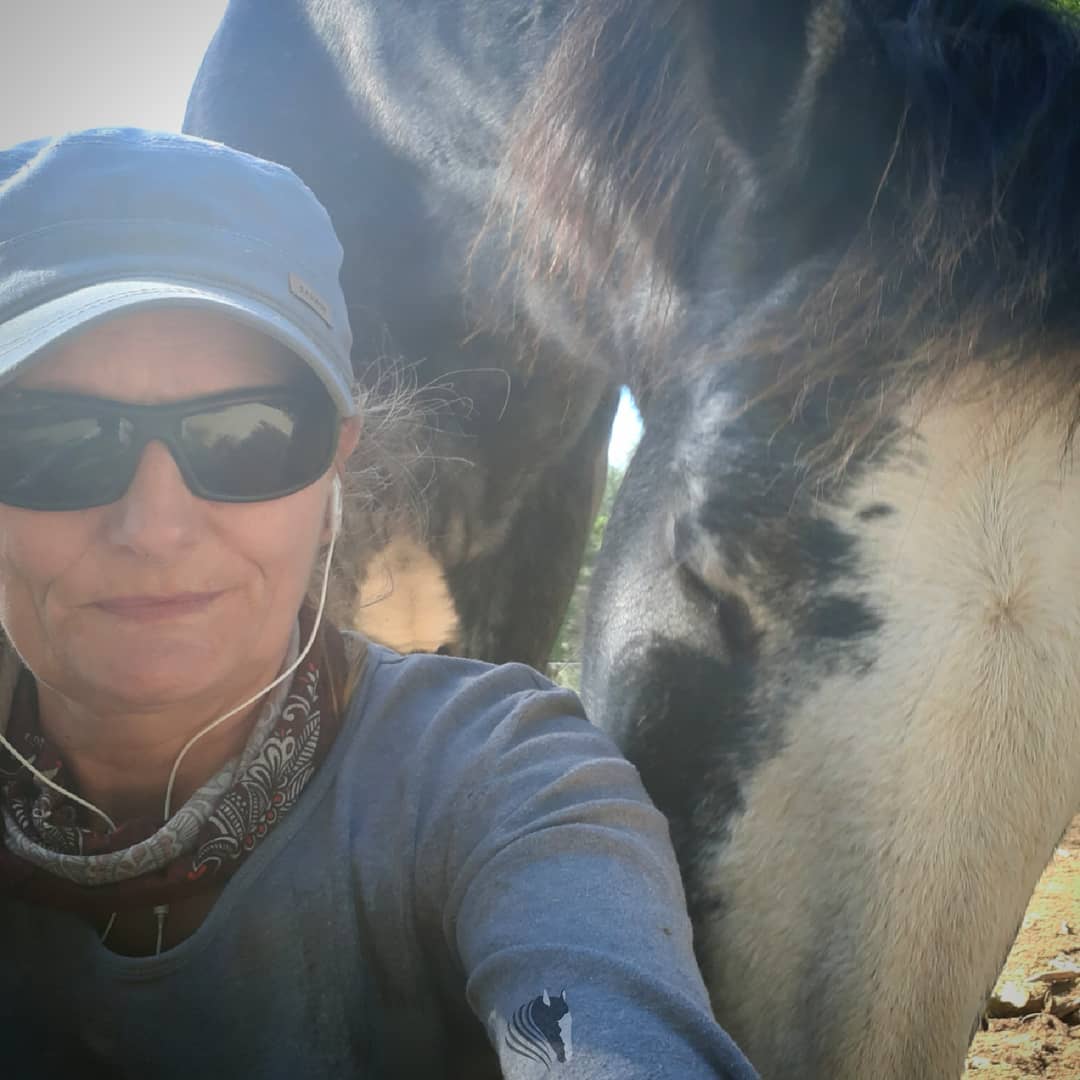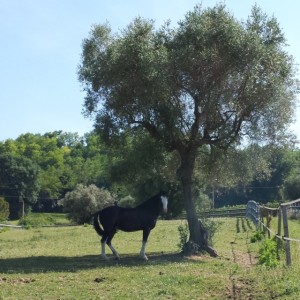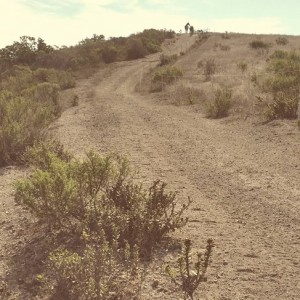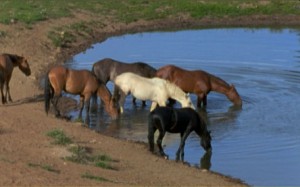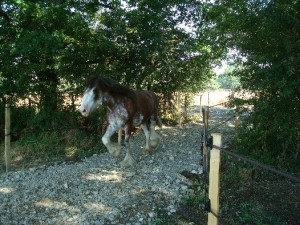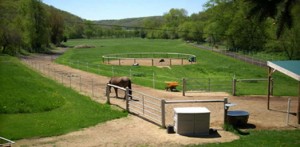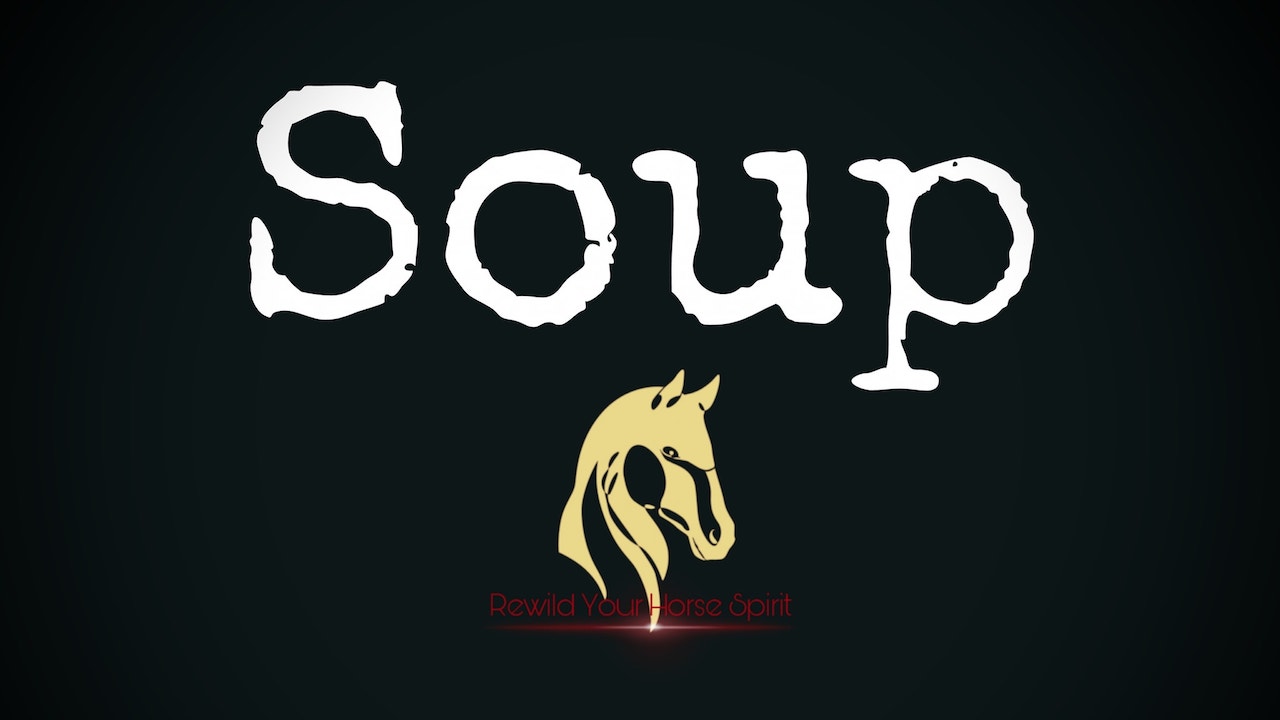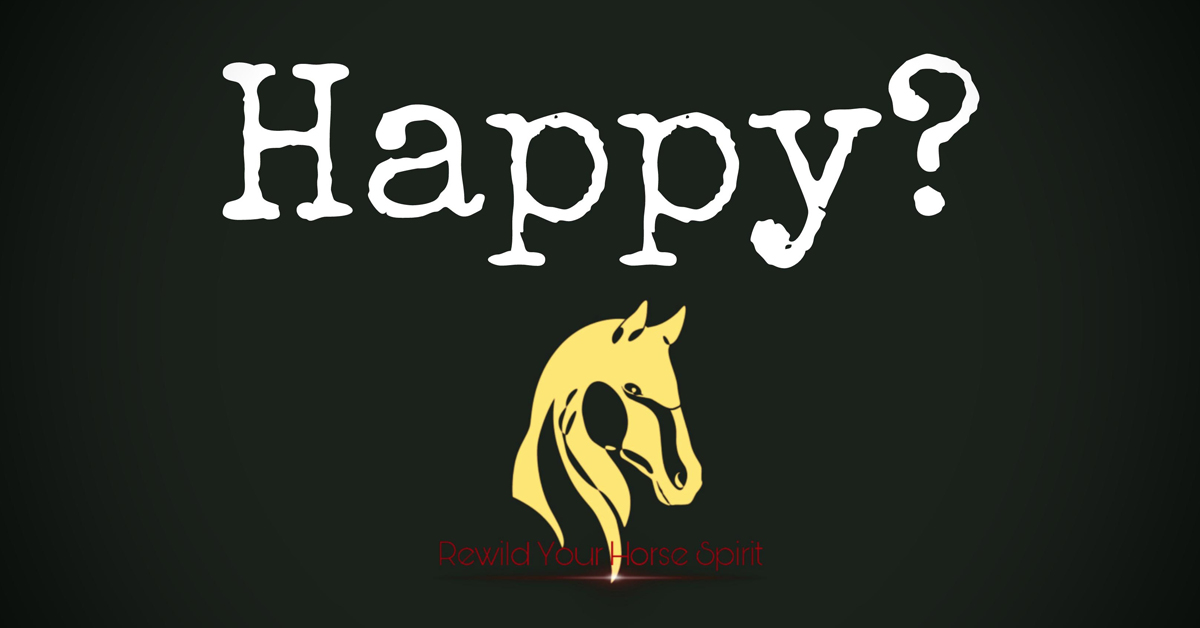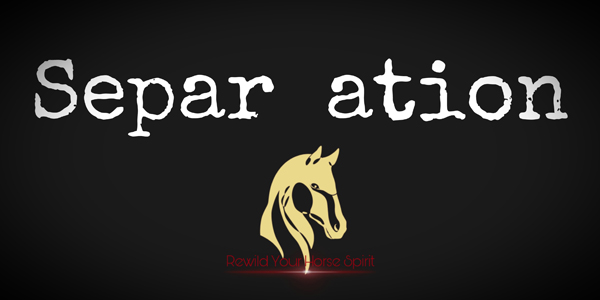Charlie is an outdoor kind of guy. He lives out in all weathers and is not confined to a stable for more than the time it takes to de-mud him for work under saddle.
From my first pony at 3 years old, I have never had a horse that was “boxed”. It is not just my belief but has been proven that horses thrive when they have freedom of movement and equine relationships that include physical contact.
It is however, not as simple as it was when I was a child. Studies that have taken place over recent years have broken new ground where providing outdoor space for your horse is concerned, giving birth to the ideas behind the perfectly termed Paddock Paradise.
The main instigator of this movement is Jaime Jackson. He has spent many years studying the wild horses of the U.S. Great Basin, following them as they go in search of food and water, noting not only what they forage and the terrain they travel, but also how they interact with each other, learning the “language” within the herd where hierarchy and family bands are created, broken down and reformed.
The conclusion is that if we can provide our domestic horses with an environment as close to their natural habitat as possible then we would have much happier and healthier partners. It seems logical and simple but the dedication to reach this point has been exceptional.
As most of us do not live anywhere near these ideal conditions or have miles and acres of land the question is; how can we provide this environment considering what we do have to hand?
The principle feature of a Paddock Paradise is the track system. In nature horses will feed with constant motion for most of the day, covering many miles in the arc of a 24 hour period, usually following tracks that have been created by them and their ancestors over many years. By creating a series of paths with well distributed stimuli, such as feeding stations and watering holes you will encourage your horse to travel promoting natural locomotion, while rousing activate curiosity.
With careful consideration you can create a track system that is surprising long around even a modest paddock.The feed stations and watering points should also be given conscientious thought. As horses naturally feed for the majority of the day it is best to give small amounts of food available throughout the day, placed strategically along the track. This will ensure the horse does not gorge or become static, as both of these states are unnatural and have health implications. They should be placed at ground level, even the water should be offered in a dugout.
This forces your horse to extend his neck and when drinking either enters the water allowing his feet to be hydrated or as he drinks the water overflows making the surrounding area muddy which has the same beneficial effect.
It is so often the case that feed and water are provided at chest level and much to close together.
Think of the automatic water distributors and the usual position hay or feed is given (especially while in stables), all simply because it is convenient to the human.
The track itself needs to be broken into areas. Firstly shelter obviously should be provided, it would be ideal if you can ensure shelter is available as the sun moves so that they can be as comfortable as possible no mater what time of day. Part of the track should be given over to gravel and rocks, and other obstacles that need negotiating, encouraging mental stimulation and natural hoof care.
An ascent and decent again teaches sure-footedness and ensures that even at rest their muscles are still being used. Apart from the watering stations, a waterhole is something your horses will be very grateful for, here they can immerse themselves which is great for their conditioning and hydration; and just plain fun!
Part of the track should open up so that they can gather and interact as a herd, grooming each other etc. and this will also provide sufficient room for a good old roll… the dust they pick up is vital for protection against the sun and flies and conditions the hair better than anything you can buy!
As the track is used over time the growth rate of the grass will be greatly reduced, this is a good thing as too much lush pasture grass which most of us have is not good for your horse, and they will be more reliant on the hay and natural fibre feeds you provide. What do I do with the big space in the middle I hear you say… It has many uses and again gives you a much more diverse use of limited space.
You can allow access to the centre area for some monitored grass feeding from time to time as long as it is considered a treat, you can use it to divide a horse from the herd if they are healing for any reason and for their benefit it is best they are away from the rough and tumble, but this way they still can see and communicate over the fence with their friends.
And if you do have limited space then you could always convert the middle into a round pen!
The possibilities are endless..
I hope I have given you some food for thought. For further reading I would highly recomend you take a look at these sites:
www.paddockparadise.com
AANHCP Paddock Paradise
Paddock Paradise Official Facebook page
www.jaimejackson.com
Make your self a cuppa and take the time to watch this video by Gydjulind showing a Paddock Paradise in action “On the Right Track”

